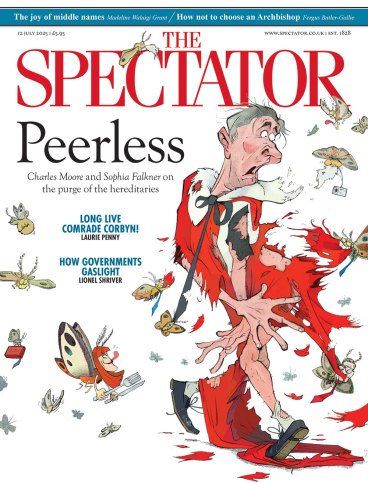
‘She and I work together, we think together,’ said Sir Keir Starmer of Rachel Reeves, the Chancellor of the Exchequer. ‘In the past, there have been examples – I won’t give any specific – of chancellors and prime ministers who weren’t in lockstep. We’re in lockstep.’
‘Sounds like you and me,’ said my husband sarcastically. But I was wondering whether the Prime Minister was aware of the connotations of his claim about being in lockstep. The Merriam-Webster dictionary gives the meaning ‘in perfect or rigid, often mindless, conformity’. An image might be the scene in Fritz Lang’s film Metropolis (1927), where the overalled workers change shift, their heads bowed, their hands drooping at their sides, their steps wearily in time.
In the 19th century, lockstep was established in America as a practice imposed on prisoners. Tyrone Power, in his Impressions of America (1836), wrote of prisoners being marched to their labours: ‘They were marched from the building in squads, using what is called the “lock-step”, and were jammed together as close as they could possibly tread.’
The step entailed each man putting his right hand on the shoulder of the man in front and putting his foot where he had trodden. A sort of precision lockstep, without physical contact, was practised by continental armies; it is, I think, possible to goosestep in lockstep.
Despite the mindless conformity of lockstep, it has become a politicians’ cliché. David Lammy, the Foreign Secretary, put himself in the same chain gang as the Chief Minister of Gibraltar: ‘Working in lockstep with Fabian Picardo we have ensured Gibraltar’s interests – as part of the UK family – are at the heart of this agreement.’ When used figuratively, in lockstep now often means no more than ‘at the same time’. Just as politicians are given to promising action at pace, so they are eager to adopt a handy metaphor all at once, in lockstep.






Comments